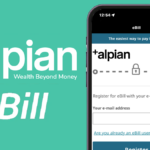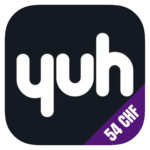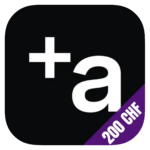Yuh Bank – initially co-founded by Swissquote and PostFinance, and now a 100% subsidiary of Swissquote – recently launched its online banking services in ...
I received an email from Credit Suisse in advance inviting me to download the exclusive app CSX.The official launch date for CSX was October 26....
How to use the N26 Switzerland 30 EUR Voucher code? By using the voucher code corinnea4648 or clicking HERE you automatically get credited with 30 EUR on your ...
Yapeal has just posted its new rates for 2021 and after only 6 months of activity, the neobank has become the most expensive on the Swiss market. The new ...
What is a neobank? A neobank is a digital bank, usually only available on mobile using an iPhone or Android application. These banks are also called mobile ...













Thank you very much for your insightful comment — it’s great to hear from someone who also uses Managed by Alpian.
You’re absolutely right about the fees. From my own portfolio, the Quarterly Management Fee entries confirm a 0.75% annual management fee, charged quarterly (around 0.1875% per quarter). For “Signature” clients, it’s indeed 0.69% per year. On top of that, there’s the TER of the ETFs used in the portfolio, usually between 0.10% and 0.30%, which brings the total cost close to 1%, as you mentioned.
Regarding the portfolio adjustments, what I’ve observed matches your description — small tactical reallocations, typically every couple of months. Alpian’s approach seems to favour strategic stability with limited active moves, which fits their digital private banking philosophy rather than short-term tactical trading.
Thanks again for sharing your experience — it’s always valuable to compare real-life feedback from other users!
Thanks a lot for your comment and for confirming this from a client’s perspective — that’s incredibly helpful.
If the app today only shows ITD (Inception-To-Date) performance without specifying that it’s TWR, and there’s no other breakdown (like TWR vs. MWR), then it’s fair to say that the methodology is unclear. You’re absolutely right: this makes it hard — if not impossible — to compare Alpian’s performance with other platforms that explicitly report TWR.
I originally received confirmation from Alpian that TWR was used, but clearly the current user experience doesn’t reflect that. I really appreciate your feedback, and I’ll update the review to flag this more transparently for readers.
Thank you very much for your detailed follow-up — and no worries at all about reposting!
You’re absolutely right to highlight the discrepancy. I did originally check with Alpian, and they stated that the performance figure was based on TWR (Time-Weighted Rate of Return), which is the GIPS-recommended standard. However, your observation is very valid: the earlier screenshot showed “TWR 3.7% (ITD)”, but today neither the app nor their website seems to mention TWR anymore.
If clients are now only seeing P/L (ITD), that strongly suggests a shift — either in reporting methodology or simply in transparency. And yes, P/L is not equivalent to TWR. This definitely makes comparisons with other banks and robo-advisors more difficult, which contradicts Alpian’s original claim of standardised reporting.
Thank you again for your insightful contribution — I’ll add a note to the article to reflect this concern more clearly. You’re helping make this resource better for everyone!
Thank you for your comment, I double checked with Alpian and this is what they say: This refers to TWR performance (time-weighted), which is the industry-standard practice (per the GIPS recommendations). It allows you to compare one platform’s performance to another’s by excluding the impact of cash flows.
All Swiss bank will comply with Automatic Exchange of Information.